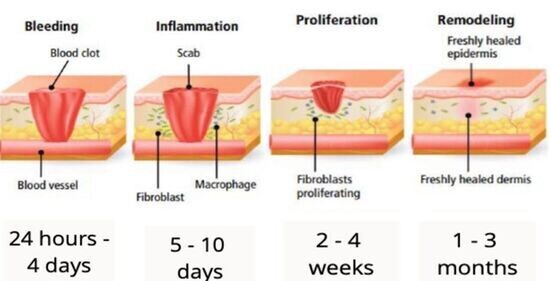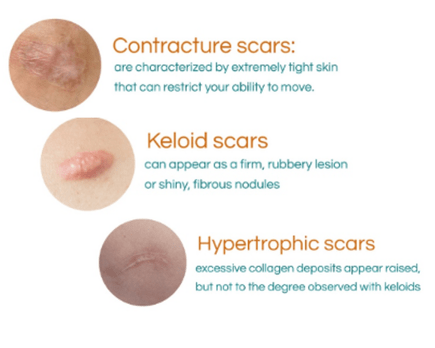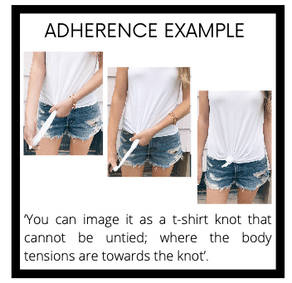PATHOPHYSIOLOGY OF SCAR TISSUE
What is a scar?
Scar is a formation of tissue that occurs as a result of an inaccurate healing process.
What are the causes of scar tissue?
All lesions secondary to wounds, burns, acne, insect bites, piercings, tattoos, lacerations, surgeries, including Cesarean section, produce scar tissue.
A zoom into the healing process
After any trauma, the great work of tissue repair is assigned to the “Healing Process” which consists of 4 stages:
1) Bleeding and angiogenesis with the formation of new blood vessels to promote the release of blood elements and growth factors for the reconstruction of new tissue;
2) Inflammation and migration of the fibroblasts towards the extracellular matrix with the production of inflammatory cytokines, enzymes and in particular proteins including the secretion of tropocollagen and elastin;
3) Production and deposition in the extracellular matrix of collagen cells which are the main endurance components of the connective tissue;
4) Remodelling of the extracellular matrix with enzymes that modifies the deposition of the collagen cells in order to restore the injured tissue.
How is the injured tissue regenerated or replaced?
If the healing process has been completed successfully, the damaged tissue is regenerated. On the other hand, a few factors including the severity and localisation of the injury, the embryological origin of the damaged tissue and others patients’ comorbidities, can affect the completion of the last remodelling phase, inducing a continuous inflammatory process that ends with the tissue replacement. A replaced tissue is formed by an excess of collagen cells with low elastic capacities and more fragility.
Scars types
There are few types of scars depending on the excess of the collagen components in the epidermis and dermis.
These may adhere to the underlying layers, causing pain and affecting soft tissue mobility and range of motion.
Osteopathic manual treatment
Osteopathic manual treatment is able to reduce the deposition of collagen during the healing phase, applying external and orientated mechanical force with the hands on the scar tissue. This phenomenon is called as ‘Mechanotrasduction’. The reaction is a biological change that reduces the inflammatory process and induces a recovery of elastic proteins.
At City Osteopaths we provide a specific assessment of the scar, applying an evidence-based treatment and considering the timing of the healing process and mobility of the Fascia.
Our fascial osteopathic technique consists in a gentle pressure on deep scar structures, in order to decrease the adhesion density spots and consequently restore the functionality and elasticity of the tissue.Bibliography:
· Bordoni, B. and Zanier, E. (2013) ‘Skin, fascias, and scars: symptoms and systemic connections’, Journal of Multidisciplinary Healthcare, pp. 11-24.
· Liem, T., Tozzi, P. and Chila, A. (2017) ‘Chapter 51 – Understanding and approach to treatment of scars and adhesions’, in Chapelle. S. L. Fascia in the osteopathic field. United Kingdom: Handspring Publishing Limited.
Extra articles to read:
- https://european-journal-of-osteopathic-research.com/v1/n1/influence-of-postoperative-adhesions-after-caesarean-section-on-chronic-lower-back-pain/
- https://www.sciencedirect.com/science/article/abs/pii/S0965229919302511?via%3Dihub








